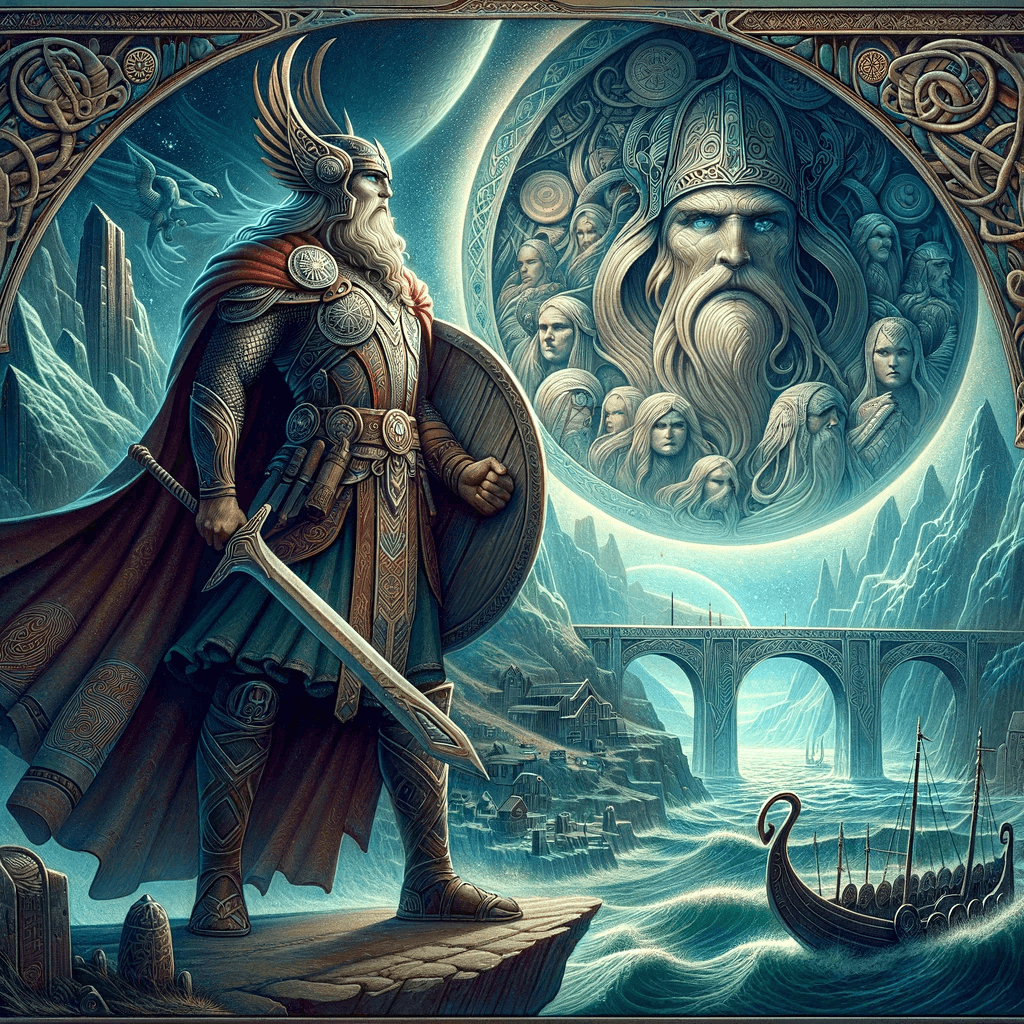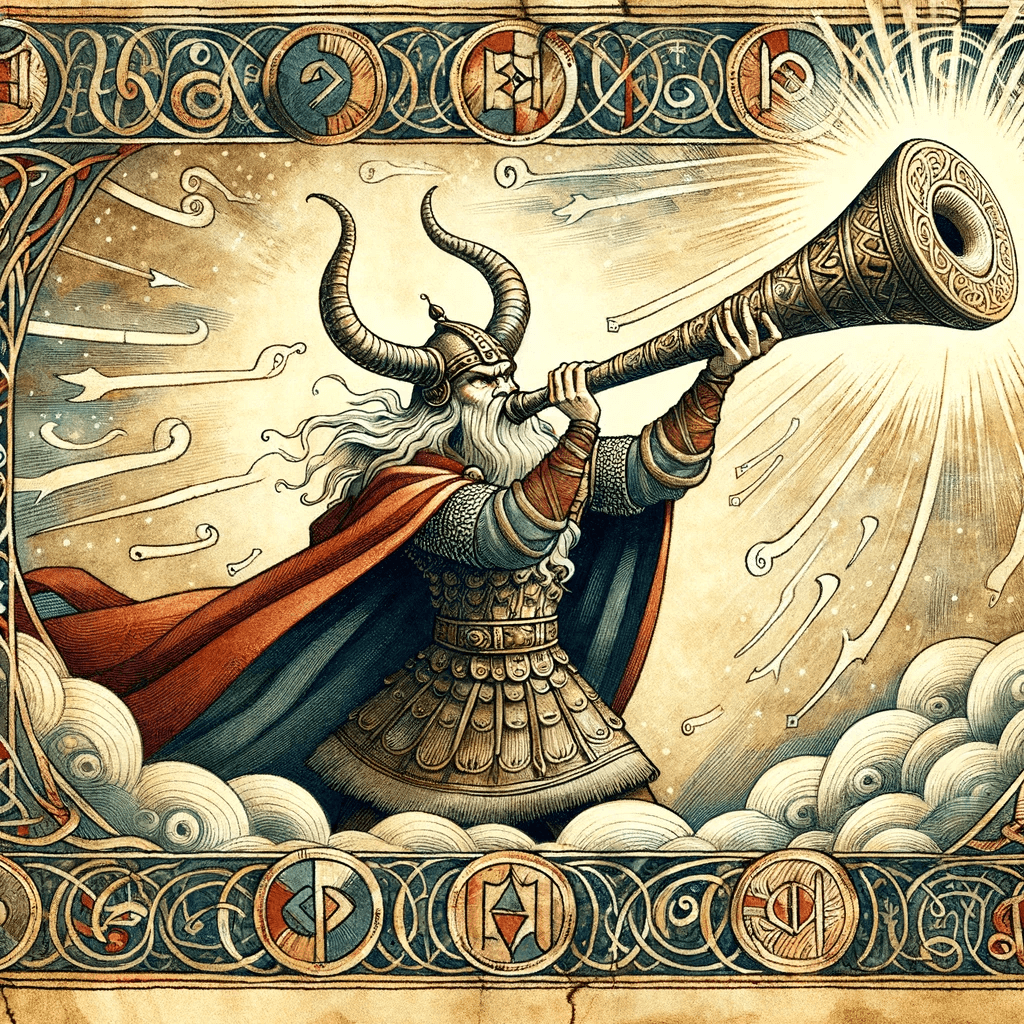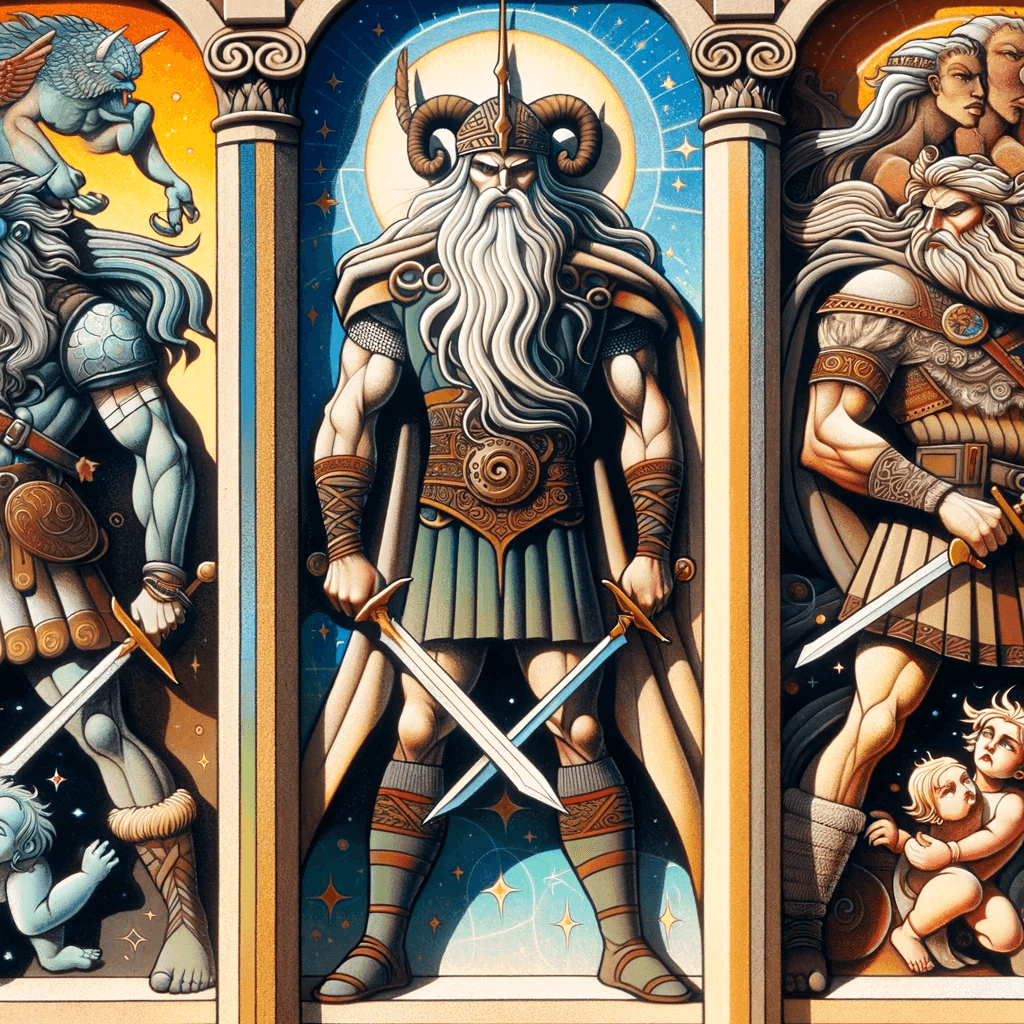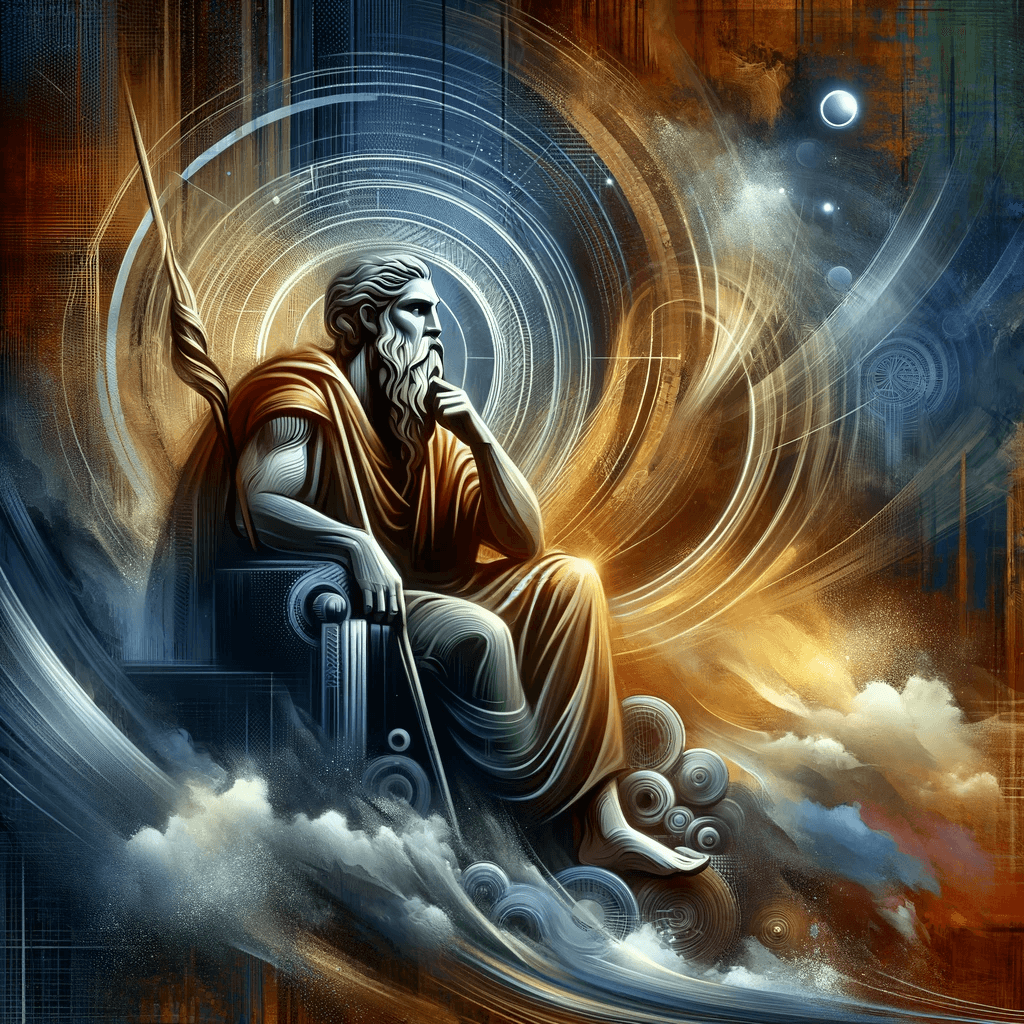In the rich tapestry of Norse mythology, Heimdall stands as a figure of immense significance, revered as the ever-vigilant guardian of the celestial realm of Asgard. His role, transcending mere myth, embodies themes of vigilance, foresight, and unyielding dedication. This article aims to provide a comprehensive and accurate portrayal of Heimdall, delving deep into historical and mythological sources. We will explore his origins, powers, symbolic meanings, and enduring impact on cultural and literary landscapes. Drawing from ancient texts like the Poetic Edda and the Prose Edda, alongside scholarly interpretations, this exploration seeks not just to recount tales of old but to offer insights into the complexities and nuances of Heimdall’s character within the vast and mystifying world of Norse mythology.
| Origin | Norse Mythology |
| Deity Type | Norse God of Vigilance and Guardianship |
| Appearance | Often depicted as a vigilant and watchful figure, sometimes with a horn |
| Role | Guardian of the Bifrost Bridge, which connects the realms; the “Watchman of the Gods” |
| Gjallarhorn | Possesses the Gjallarhorn, a horn that signals the onset of Ragnarök, the end of the world |
| Connection | Said to be the ancestor of humanity, representing a link between gods and mortals |
| Cultural Impact | Revered as a protector and guardian figure in Norse mythology |
| Depictions | Featured in various Norse myths and sagas, especially those involving the defense of Asgard |
1. Historical and Mythological Origins of Heimdall
Unraveling the Roots of Heimdall
The historical origins of Heimdall in Norse mythology are as intriguing as they are ancient. Heimdall, also known as Heimdallr in Old Norse texts, emerges as a central deity, enigmatic and powerful. His presence is a cornerstone in the mythological framework of the Norse cosmogony, serving as a symbol of watchfulness and protection.
Tracing the Tales: Textual Evidences
The earliest and most comprehensive references to Heimdall are found in the Poetic Edda and Prose Edda, two critical sources of our understanding of Norse mythology. The Poetic Edda, a collection of Old Norse poems from the Icelandic medieval manuscript Codex Regius, portrays Heimdall as a guardian god, endowed with foreknowledge and resounding might. In the Prose Edda, written by Snorri Sturluson in the 13th century, Heimdall is depicted with more detailed narratives, elucidating his roles and heroic feats. These texts provide not just mythological narratives but also a window into the beliefs and values of the Norse people.

The Etymology of a Name: Deciphering Meanings
The etymology of Heimdall’s name is a subject of scholarly debate, offering multiple interpretations. One possible interpretation is that his name derives from Old Norse words meaning ‘the one who illuminates the world’. He is linked to the idea of ‘resounding’ or ‘thundering,’ which aligns with his role as the possessor of the Gjallarhorn, an instrument whose sound resonates throughout the worlds. These interpretations not only shed light on his character but also reflect the linguistic richness and cultural depths of Norse mythology.
2. Heimdall’s Role and Powers in Norse Mythology
Guardian of the Bifrost: The Watcher at the World’s End
Heimdall’s most distinguished role in Norse mythology is as the guardian of the Bifrost, the resplendent, rainbow bridge connecting Midgard, the realm of humans, to Asgard, the realm of the gods. This role is emblematic of his status as a sentinel, standing at the juncture of the worlds, ensuring that the bridge remains impervious to the incursions of giants and other malevolent forces. His duty reflects not just physical guardianship but also a deeper, symbolic guardianship of the cosmic order.
Extraordinary Abilities: The All-Seeing and All-Hearing
Heimdall is endowed with powers that are nothing short of extraordinary. He possesses an unparalleled sight, able to see for hundreds of leagues, and his hearing is so acute that he can detect the grass growing on the earth and the wool growing on sheep. These abilities enable him to be an ever-alert guardian. Another significant aspect of his power is the Gjallarhorn, a mighty horn that Heimdall is destined to sound at the onset of Ragnarok, the end of the world in Norse cosmology. The sound of the Gjallarhorn is a pivotal moment, signaling the beginning of the final battle.

Relationships and Role in Ragnarok
Heimdall’s interactions with other Norse gods, including Odin and Loki, are complex and integral to the tapestry of Norse myths. His relationship with Loki, in particular, is characterized by enmity, culminating in a prophecy that they will slay each other at Ragnarok. Heimdall’s role in the events leading to Ragnarok is critical — he is not just a passive observer but an active participant in the unfolding cosmic drama. His vigilance and his eventual sounding of the Gjallarhorn set the stage for the ultimate battle, underscoring his role as both a protector and a harbinger of change.
3. Symbolism and Interpretation
Unveiling the Symbolic Layers of Heimdall
Heimdall, in Norse mythology, is a figure rich in symbolic meaning. His very essence as a guardian transcends literal interpretation, delving into the realm of metaphor and allegory. As the watchman of the gods, Heimdall embodies the concept of eternal vigilance, a theme that resonates deeply in Norse culture.
Interpretations of Heimdall’s Symbolism
Scholars and enthusiasts alike have interpreted Heimdall’s character in various ways. Some view him as a symbol of hope and eternal readiness, representing the idea that vigilance is the key to preventing chaos. Others see him as embodying the boundaries between the divine and the mundane, symbolizing the liminal space that separates but also connects different realms of existence. His role as the guardian of Bifrost further accentuates this, as he stands at the literal and metaphorical bridge between worlds.

Reflecting Norse Cultural Themes
Heimdall’s role as a guardian aligns with broader themes in Norse culture and mythology. The Norse people valued the concepts of duty, protection, and preparedness, qualities that Heimdall exemplifies. His unwavering watch over Asgard mirrors the Norse ethos of being ever-ready for the challenges and upheavals of life. This readiness is not just physical but also spiritual and moral, reflecting a worldview where balance and order are maintained through constant vigilance.
4. Heimdall in Art and Literature
Heimdall in Historical Norse Art and Literature
Heimdall’s depiction in historical Norse art and literature reflects his esteemed status in the Norse pantheon. In ancient Norse carvings and manuscripts, he is often portrayed as a formidable figure, armed and vigilant, embodying his role as a guardian. His presence in these art forms serves not just as a cultural artifact but as a testament to his importance and reverence in Norse mythology. In literary texts, such as the Eddas, Heimdall’s narratives are rich with symbolism and heroic undertones, further cementing his legacy in the Norse mythological tradition.
The Modern Resurgence
In contemporary culture, Heimdall has experienced a resurgence, becoming a prominent figure in modern literature, movies, and other media. This modern portrayal often takes creative liberties, adapting his character to suit contemporary narratives while retaining his core attributes of vigilance and strength. In popular culture, Heimdall is frequently depicted as a wise and powerful guardian, sometimes even taking on roles that transcend his traditional mythological confines. This adaptation speaks to the flexibility of mythological characters in fitting into modern storytelling paradigms.
Impact on Literature and Media
The influence of Heimdall extends beyond mere representation; he has become a symbol of steadfast guardianship and foresight in modern storytelling. His character has inspired authors, filmmakers, and artists to create works that echo the themes of vigilance and duty central to Heimdall’s mythology. People often use Heimdall as a reference point or archetype in discussions about guardianship, duty, and the intersection between the mundane and the divine.
5. Comparative Mythology
Heimdall and Similar Figures in World Mythologies
In exploring the rich tapestry of world mythologies, it becomes apparent that figures akin to Heimdall — guardians, watchers, and sentinels — are a recurring motif. For instance, in Greek mythology, Hermes, as the messenger of the gods, shares similarities with Heimdall in terms of being a communicator between different realms. Similarly, in Hindu mythology, the character of Hanuman, with his unwavering devotion and vigilance, echoes aspects of Heimdall’s guardianship.
Common Themes and Unique Aspects
One common theme across these mythologies is the role of the guardian as a protector of divine secrets and a bridge between different worlds. These characters often possess attributes of foresight, strength, and moral integrity. However, what sets Heimdall apart is his unique role in the Norse cosmic narrative — as the guardian of the Bifrost, he holds a position of immense strategic and symbolic importance, something not always paralleled in other mythologies.
Additionally, Heimdall’s impending participation in Ragnarok, where he is destined to play a crucial role, adds a layer of fatalism and heroism to his character. This aspect of a guardian who is not just a watchman but also an active participant in cosmic events is a distinctive feature in Norse mythology.

Heimdall in the Global Mythological Context
In the broader context of global mythological traditions, Heimdall’s character offers insights into the Norse perception of the cosmos, duty, and the inevitable. His story, when compared with similar mythological figures, highlights both the universal archetypes present in various cultures and the unique cultural and spiritual insights of the Norse people. Heimdall, therefore, becomes a focal point through which one can appreciate the diversity and similarity of mythological narratives across different civilizations.
6. Implications and Relevance Today
Cultural and Spiritual Significance
In contemporary society, Heimdall’s cultural and spiritual significance extends far beyond the boundaries of ancient Norse mythology. His attributes of vigilance, foresight, and steadfast guardianship resonate deeply in a world grappling with complexities and uncertainties. In a sense, Heimdall represents a timeless archetype of the watchful protector, a figure that finds relevance in various aspects of modern life, from personal endeavors to societal structures.
Modern Interpretations and Lessons
Heimdall’s extraordinary powers of perception and his role as a guardian provide profound metaphors for awareness and preparedness in our personal and professional lives. His unwavering dedication serves as an inspiration for individuals and communities to remain vigilant and proactive in the face of challenges and changes. The story of Heimdall, especially his role in Ragnarok, offers a narrative about the inevitability of change and the importance of facing it with resilience and preparedness.

Heimdall’s Relevance in Contemporary Discourse
In contemporary discourse, Heimdall’s character embodies the principles of ethical guardianship and responsibility as he vigilantly watches over the Bifrost, akin to the modern concept of stewardship — the idea of responsibly managing and protecting something valuable, whether it’s the environment, cultural heritage, or societal norms. Furthermore, his role in the Norse cosmos, as a figure who connects different realms, parallels the need for understanding and bridging diverse cultures and perspectives in our increasingly interconnected world.
7. Conclusion
In exploring the multifaceted character of Heimdall, we’ve journeyed through his historical origins, unearthed his symbolic meanings, and witnessed his profound impact in art, literature, and modern culture. Heimdall, the vigilant guardian of the Bifrost in Norse mythology, emerges not just as a mythical figure but as a timeless symbol of vigilance, foresight, and resilience. His extraordinary abilities, significant role in the events of Ragnarok, and enduring presence in various cultural expressions underscore his lasting legacy. This exploration reveals that Heimdall’s relevance transcends the ancient Norse narratives, offering insights and inspirations that resonate profoundly in our contemporary world. He embodies ideals that are as pertinent today as they were in the Viking Age, serving as a reminder of the enduring power and relevance of mythological characters in shaping and reflecting human experiences and values.
